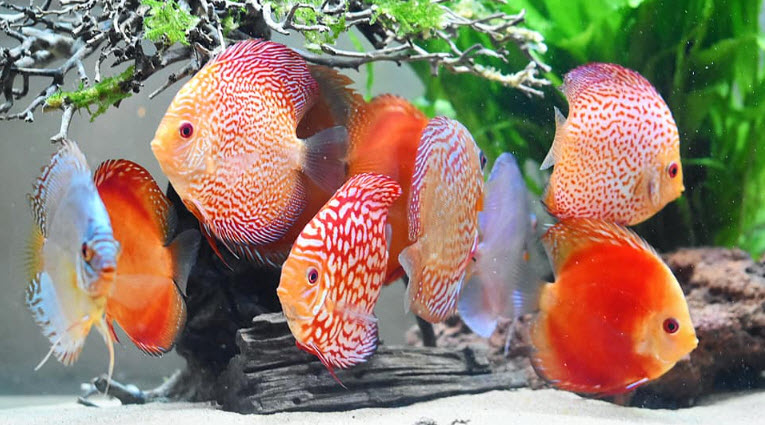
University research has shown discus are somewhat less forgiving than most fish when it comes to fish food. Commercial dry foods generally are not “optimum” for discus, even if they have a label that says “For Discus”. But note the word “optimum”. Perfectly satisfactory results can be had with most pelleted commercial fish food as long as that food does not contain soybeans, potato protein or wheat gluten.
For “optimum” health food for discus need to have at least 45% high quality protein. The higher the protein level the better. Grated beef heart remains the best all around food for discus, despite all the attempts by fish food manufacturers to discredit beef heart. The best alternative foods are lean meats like fish filets (any fish is fine), shrimp, chicken breasts or chicken hearts. Either chop up the unfrozen meat or grate the frozen meats. Animal protein or “dark green” vegetable protein is better than “cheap” vegetable protein such as soybeans or wheat germ.
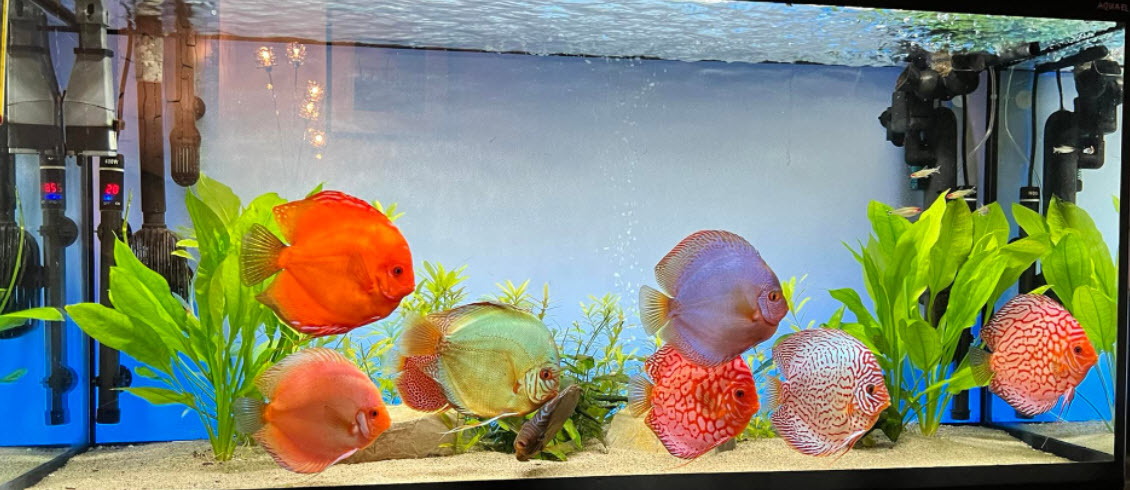
A red meat with no fat on it is also excellent (like flank steak). One can also just take a cut of red meat and cut all the fat off of it before freezing or chopping it. I freeze the meat and then simply grate the frozen meat with a grater. One can also just chop the unfrozen meat up very fine with a motorized chopper. It is a myth that “terrestrial animals such as cows have the wrong proteins for fish“. The amino acid composition of terrestrial animals is identical to the amino acid profiles of aquatic animals such as fish.
Bloodworms are excellent but expensive. Any frozen food is good except for the fact that sometimes this food had been inadvertently defrosted for enough time to go “bad”, which can produce food poisoning in a fish. Fresh vegetables like spinach or zucchini (coquette) are also excellent.
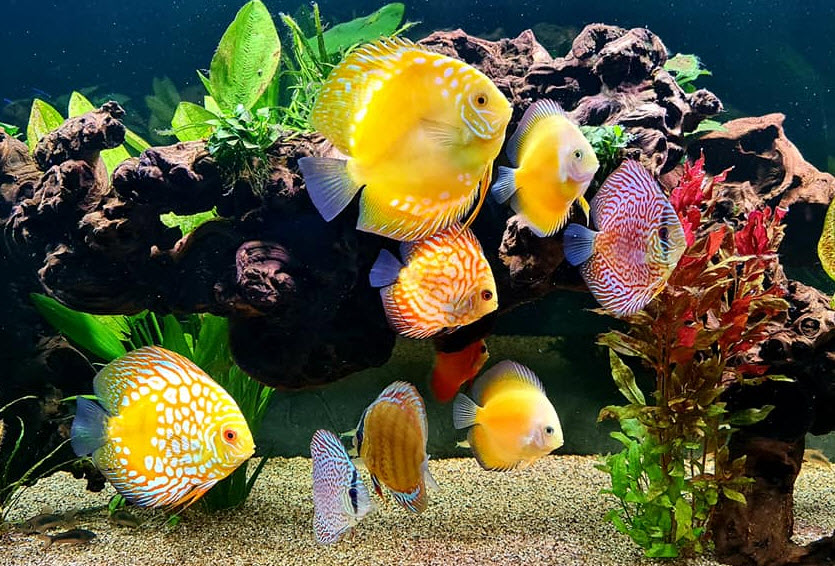
Chopped up raw beef heart has always been the food of choice for discus, with good reason. Beef heart is a very lean meat that by dry weight is some 60% high quality protein and 20% fat. This makes it an excellent food for discus, especially to prepare the discus for breeding. The problem is finding beef heart. Even specialty butchers don’t seem to have it any more.
The salmon/algae gel food recipe in the article below is an excellent option and is what I use.
3.4. Gel Food for Aquarium Fish
As discus like to “browse” algae growth, it is a good idea to have an area of the aquarium where there is significant algae growth. Plants can create such an environment as most plants have some algae on them.

Note that the discus is NOT a carnivore, it is an omnivore eating roughly 56% plant matter per Crampton. “Ecology and Life History of an Amazon Floodplain Cichlid: the Discus Fish Symphysodon (Perciformes: Cichlidae)”, W. Crampton, 2008:
“This paper reports an autoecological study of the western Amazonian discus S. haraldi (until recently classified as S. aequifasciatus). This species feeds predominantly on algal periphyton, fine organic detritus, plant matter, and small aquatic invertebrates (12% algae and microalgae, 44% plant matter (flowers, fruits, seeds, leaves), 6% detritus, 16% aquatic invertebrates, and 22% terrestrial and arboreal arthropods)”
This is supported by the obvious periphyton grazing characteristics of the discus, the small mouth and the constant picking it exhibits on the plants and ornaments the discus may share an aquarium with. But note that this algae that they eat in the wild is much more nutritious than the vegetable matter found in most commercial fish food. So do not assume this “plant matter” eating habit means that discus should be feed commercial “veggie” foods.
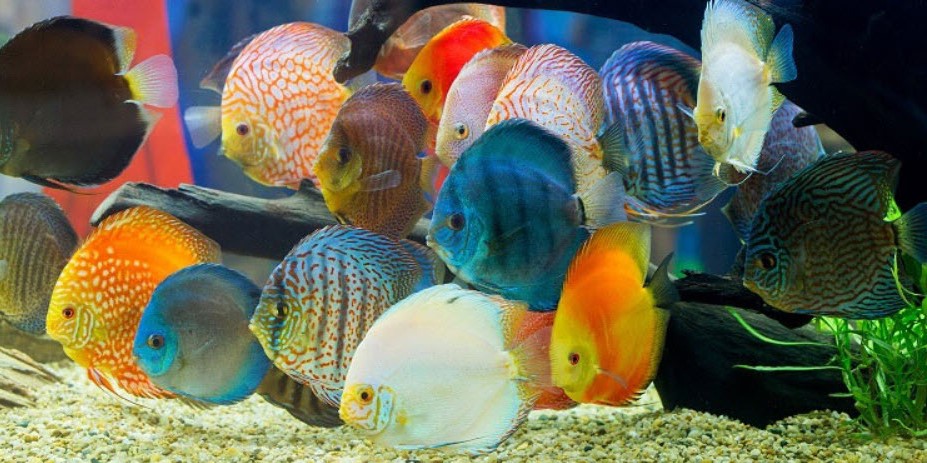
Using Cheap Food for Discus
If one uses a food which is largely cheap vegetable proteins such as soybean meal one can run into trouble with discus. There is a study that was done on vegetable protein in discus: “Assessment of Soybean Meal in Diets for Discus (Symphysodon aequifasciata) Farming Through a Fishmeal Replacement Study”, A. Chong, 2003. This 12-week study showed that juvenile discus fed 50% cheap vegetable protein had a 70% lower growth rate.
Possibly even more important is that mortality appeared to be 6% to 10% greater over the 12-week period in the discus fed greater than 30% cheap vegetable protein. This is the data from the study:
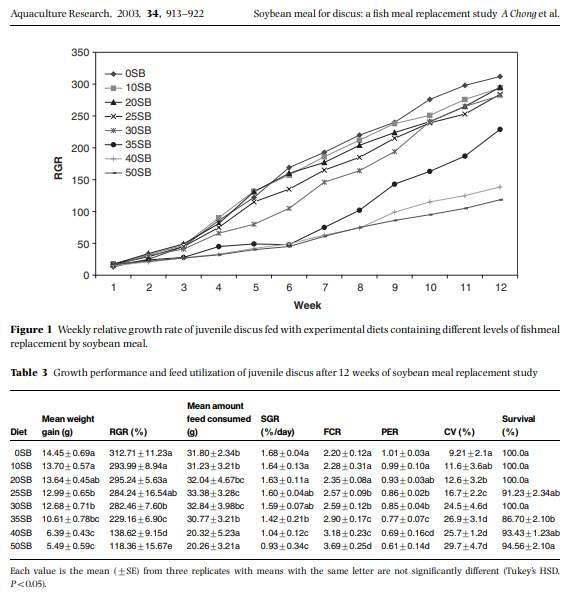
This dietary restriction is because soybean protein does not have the amino acids methionine and lysine. Potato protein and wheat gluten protein have the same problem. Virtually 99% of the vegetable protein in fish food is this type of protein simply because it is cheap. Some “very green” vegetables such as spinach or spirulina have the amino acids methionine and lysine but they are expensive so aren’t put into fish food in significant quantities. The algae that discus eat in the wild have the necessary amino acids and are good foods.
What this all means is that fish food which has more than 30% vegetable protein in it is not the “best” food for discus. Unfortunately one cannot tell how much vegetable protein is in commercial foods from the label. So you either have to make your own food or avoid any commercial food listing soybeans, potato protein or wheat gluten in the ingredients.
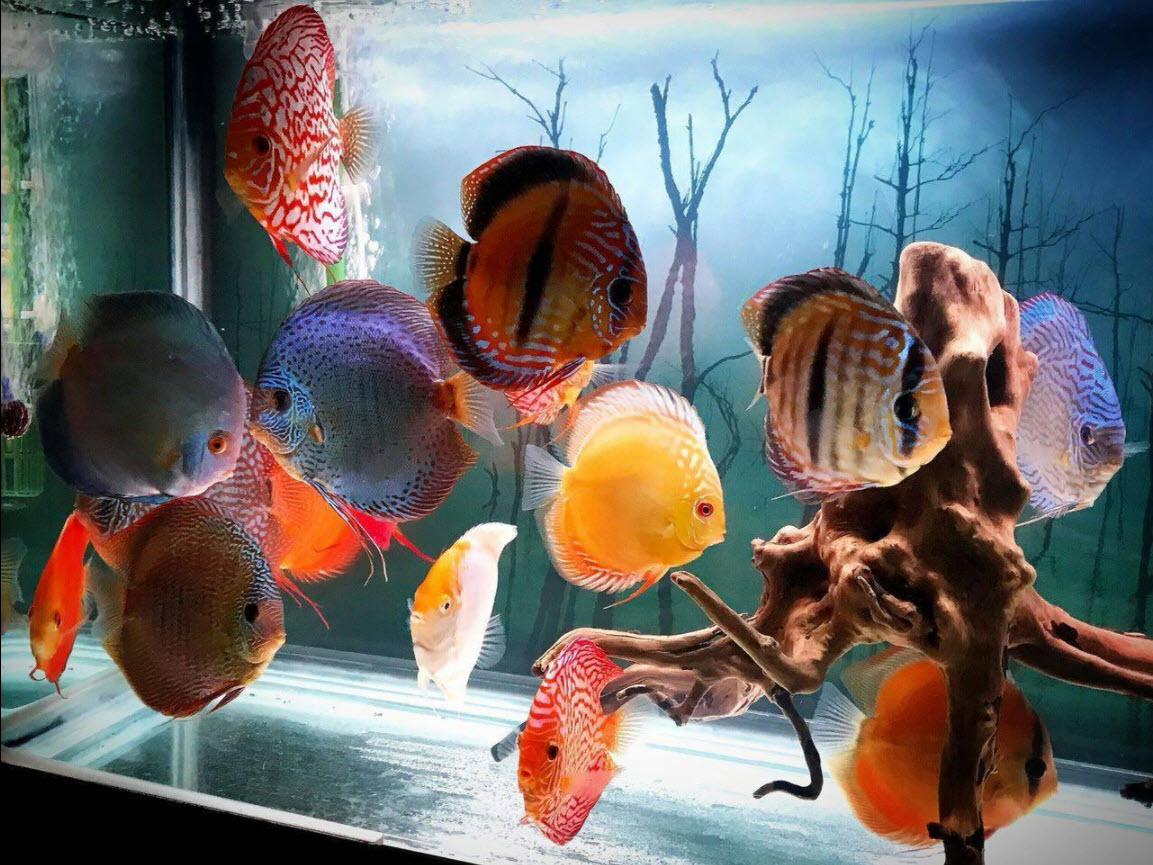
Information on Discus
The following articles will be useful reading if you are contemplating keeping discus:
17.11. Discus
17.11.1. Discus Husbandry
17.11.2. Filtration for Discus
17.11.3. Water for Discus
17.11.5. Discus Pheromones
17.11.6. Breeding Discus
17.11.7. Discus Aquarium Photos
.
Return to Fish Selection Menu
.
Aquarium Science Website
The chapters shown below or on the right side in maroon lead to close to 400 articles on all aspects of keeping a freshwater aquarium. These articles have NO links to profit making sites and are thus unbiased in their recommendations, unlike all the for-profit sites you will find with Google. Bookmark and browse!
.

Leave a Reply